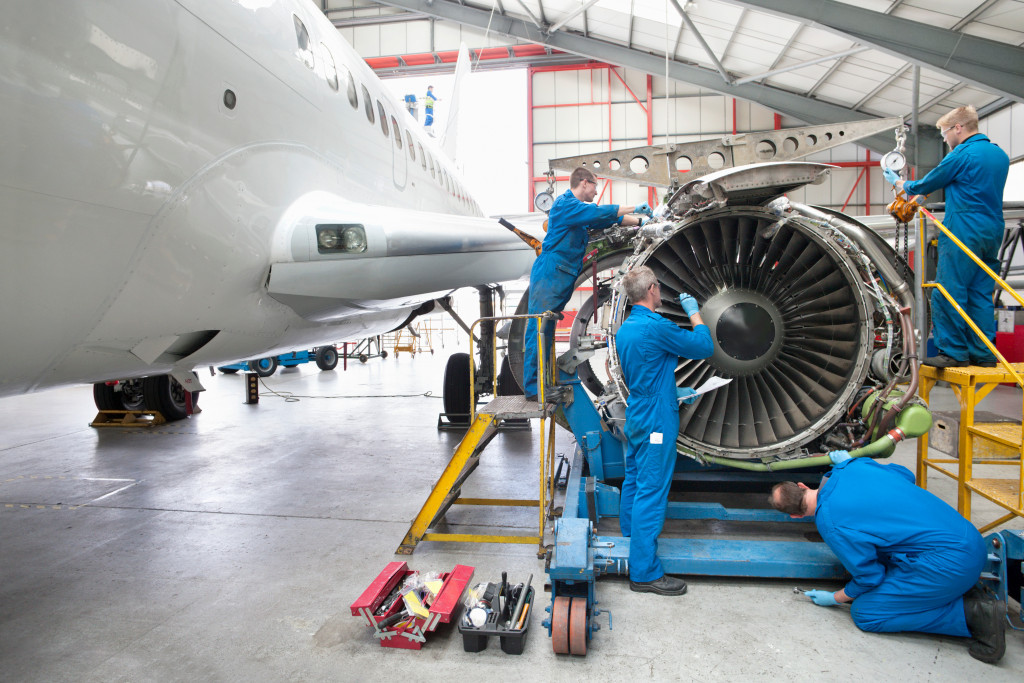As an aircraft owner or mechanic, it’s crucial to stay up-to-date on the latest trends and technologies in aircraft maintenance. That way, you can ensure that your aircraft is always safe and reliable. In addition, keeping your aircraft in excellent condition can also help you save money on repairs and maintenance costs. On average, flying a small single-engine airplane costs around $1,200 per hour.
So, if you can reduce the hours your aircraft spends in the shop, you’ll save a lot of money in the long run. Here are 6 of the most emerging trends and technologies in aircraft maintenance.
Predictive Maintenance Technologies
Predictive maintenance technologies are used to monitor the health of aircraft components and systems to diagnose problems before they lead to downtime or safety issues. These technologies are usually integrated into the aircraft’s existing maintenance software, making it easy for technicians to keep track of the data.
One of the most popular predictive maintenance technologies is vibration analysis, which uses sensors to measure the vibrations of aircraft components. This data is then analyzed to identify potential problems before they cause damage. Other predictive maintenance technologies include oil analysis, thermography, and ultrasonic inspection.
Portable equipment for maintenance
Portable equipment is becoming increasingly popular in aircraft maintenance. One example is the portable hydraulic power unit (HPU), which can power various tools, including impact wrenches, torque wrenches, and Nutrunners. HPUs are portable and lightweight, making them easy to transport from one job site to another.
In addition, they are relatively quiet, making them ideal for use in airport hangar areas. HPUs are also more efficient than traditional pneumatic systems, meaning they can help reduce maintenance costs. As portable equipment continues to develop and evolve, even more, aircraft maintenance tasks will likely be able to be carried out using this type of equipment.
3D Printing
3D printing is a rapidly evolving technology that is changing the landscape of aircraft maintenance. Also known as additive manufacturing, 3D printing offers some advantages over traditional manufacturing methods. Perhaps most importantly, it allows for the production of complex parts with high precision. Aircraft parts can be made tighter tolerances, resulting in increased safety and reliability. In addition, 3D printing is a much faster process than traditional manufacturing, saving time and money. As technology develops, 3D printing will likely play an increasingly important role in aircraft maintenance.
Composite Materials
One of the latest trends in aircraft maintenance is composite materials. Composite materials are made from a combination of two or more substances with different physical or chemical properties. When these substances are combined, they create a stronger and lighter material than either substance on its own. For example, carbon fiber is often used in aircraft construction because it is both strong and lightweight.
Using composite materials in aircraft helps reduce the plane’s overall weight, which can save fuel and improve performance. In addition, composite materials are often more resistant to damage than traditional materials such as metal, making them ideal for use in high-stress areas such as the wings or fuselage. As a result, composite materials will likely continue to increase in the aircraft maintenance industry.
Drone Inspections

One of the most exciting recent developments in aircraft maintenance technology is drones for inspections. Drones offer several advantages over traditional inspection methods. First, they allow for a more thorough inspection of the aircraft, as they can reach areas that are difficult or impossible to access with a ladder or cherry picker. Second, they provide a real-time view of the aircraft, which can be invaluable for troubleshooting. Third, they are much less expensive than traditional inspection methods.
Finally, they offer a safer alternative to ladder or cherry picker inspections, as workers do not need to be put in potentially dangerous positions. As a result, drone inspections quickly become the new standard in aircraft maintenance.
Augmented Reality
Augmented reality is a technology that allows users to view digital information in the real world. In aircraft maintenance, augmented reality can provide technicians with relevant information about an aircraft while they are working on it. This can be particularly helpful for complex tasks like diagnosing problems or assembling components. Additionally, augmented reality can be used to provide training for new technicians. By using augmented reality, aircraft maintenance organizations can improve the efficiency and accuracy of their work.
The bottom line
As you can see, there are many emerging trends and technologies in the world of aircraft maintenance. These trends are likely to continue to develop and evolve, resulting in even more efficient and effective aircraft maintenance. Hopefully, this article has given you some insight into the future of aircraft maintenance.

